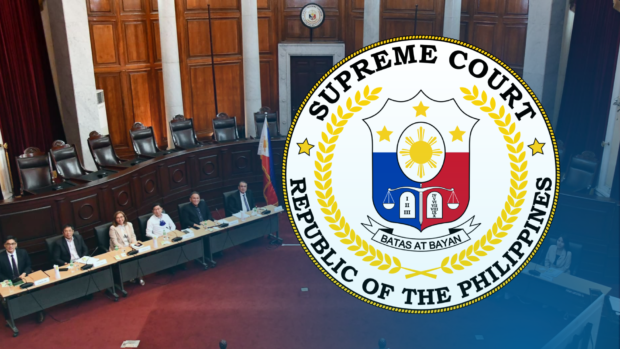Guidelines on ‘discernment’ for cases involving minors set by SC
MANILA, Philippines — Guidelines for the process of determining discernment in cases involving juvenile offenders has been established by the Supreme Court (SC).
This was after the the ruling finding a then 17-year-old boy guilty of homicide in a 26-page decision made public on Wednesday was affirmed by the SC.
Along with the ruling, the high court laid down guidelines for determining discernment in crimes involving offenders of minor age:
The SC defined discernment as “the capacity of the child at the time of the commission of the offense to understand the difference between right and wrong and the consequences of the wrongful act.”
- The task of ascertaining discernment is done preliminarily by a social worker, and finally by the court. The determination shall take into account the ability of a child to understand the moral and psychological components of criminal responsibility and the consequences of the wrongful act; and whether a child can be held responsible for essentially antisocial behavior. The social worker’s assessment is merely evidentiary and is not binding upon the court. Ultimately, the court finally determines discernment, based on its own appreciation of all the facts and circumstances in each case.
- There is no presumption that a minor acts with discernment. The prosecution must specifically prove as a separate circumstance that the alleged crime was committed with discernment.
For a minor at such an age to be criminally liable, the prosecution is burdened to prove beyond reasonable doubt, by direct or circumstantial evidence, that he or she acted with discernment. - In determining discernment, courts shall consider the totality of facts and circumstances in each case, such as: (i) the very appearance, the very attitude, the very comportment and behavior of said minor, not only before and during the commission of the act, but also after and even during trial, (ii) the gruesome nature of the crime, (iii) the minor’s cunning and shrewdness, (iv) the utterances of the minor, (v) the minor’s overt acts before, during and after the commission of the crime, (vi) the nature of the weapon used, (vii) the minor’s attempt to silence a witness, and (viii) the disposal of evidence or hiding of the corpus delicti.
The case
“Ultimately, a careful consideration of all facts and circumstances, particularly the gruesome nature of the attack, the chosen time and place, the attempt to silence the victim who previously acted as a witness, and his very behavior and level of education, indicates that he acted with discernment,” the SC decision for a petition for review on certiorari filed by the accused read.
“As gleaned from these facts, he committed the crime with an understanding of its depravity and consequences. Thus, CICL XXX is criminally liable for his act,” it added.
The decision stemmed from an incident in 2003 when the victim served as a witness in a physical injury complaint filed against the accused by another individual.
READ: Supreme Court stands up for girl humiliated by boyfriend’s parents in 2004
Brutal
The victim was found lying in front of his own home the following day, with his face and eyes bloodied as he recounted to his parents that the accused struck his eyes.
In the hospital, it was determined that he suffered massive cerebral contusions and bleeding in the brain which could have been caused by any force from a hard object.
The victim managed to be discharged from the hospital in a vegetative state, but died on November 26, 2008 after being bedridden for five years.
Six years later, on February 28, 2014, a regional trial court found the accused guilty of homicide, which was then upheld by the SC.
He was sentenced to six months and one year to eight years and one day and was also ordered to pay the heirs of the victim at P504,145 as actual damages, P50,000 as civil indemnity, and P50,000 as moral damages with a 6 percent interest per annum from the finality of the decision.
The SC said that the facts and circumstances indicated that the accused acted with discernment when he assaulted the victim with a blunt object enough to deal fatal injuries — with the location and deliberate nature of the wounds further illustrating the accused’s discernment.
It also pointed out the nature of the attack, which occurred at around 3:00 a.m., together with an accomplice, adding how the assault could be considered as an attempt to either silence the victim or retaliate against them for testifying in a previous incident.
His own testimony also suggests his level of awareness, evidenced by his decision to drop out of school out of fear after receiving a warning.
In addition, upon considering the fact that the accused was a second-year nursing student, the SC concluded that his level of education is enough to indicate his capacity to understand that causing harm to the victim was wrong both morally and legally.
Disclaimer: The comments uploaded on this site do not necessarily represent or reflect the views of management and owner of Cebudailynews. We reserve the right to exclude comments that we deem to be inconsistent with our editorial standards.

